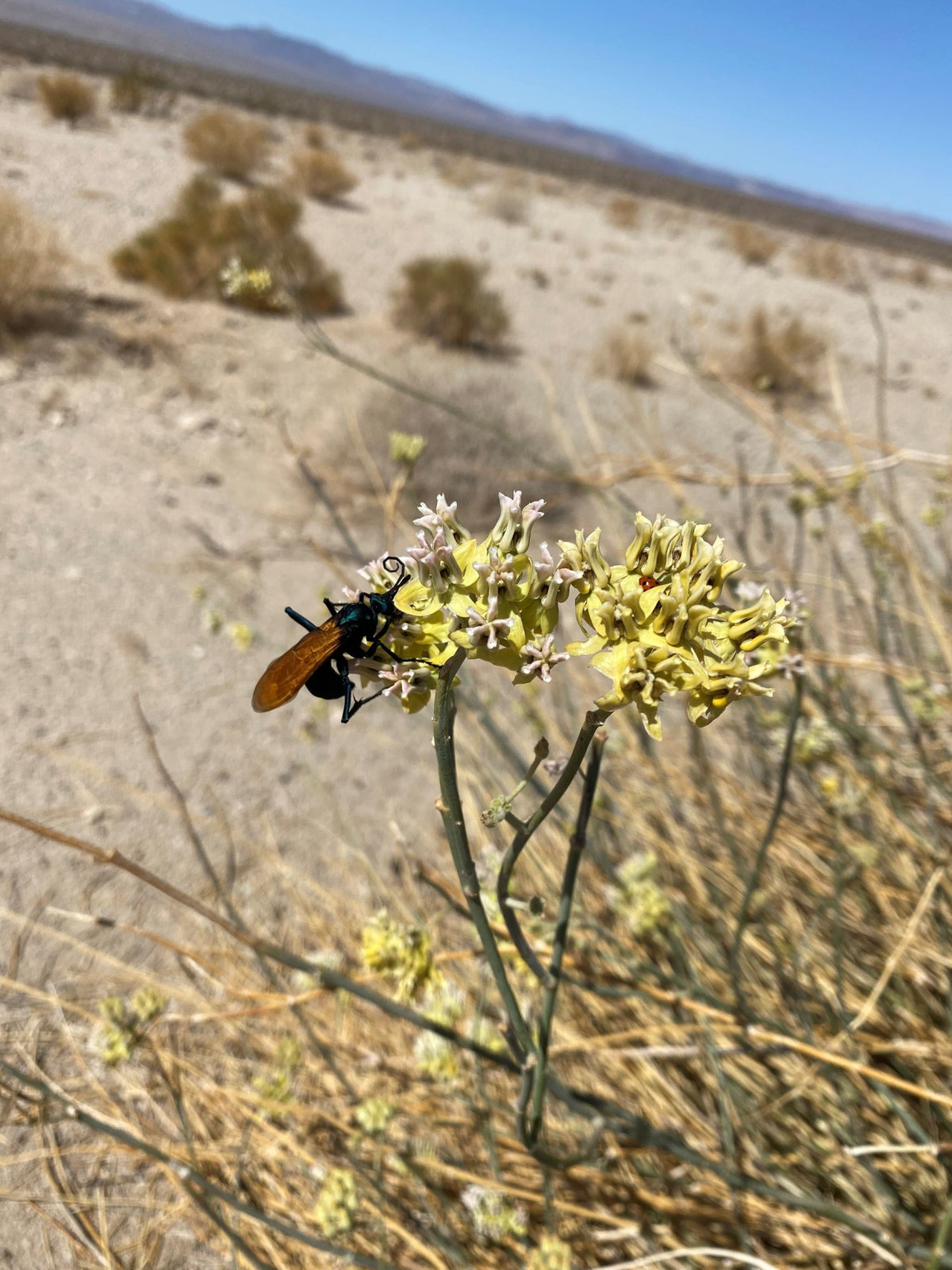
This summer, the MJV is managing two California monitoring projects designed to help quantify the presence (or absence) of monarchs and assess breeding habitat across diverse California landscapes. With the western monarch population in steep decline, this monitoring work is part of regional and national efforts to accelerate monarch conservation. Read our in-depth introduction to this summer’s California monitoring work here.

For a second year, we have a field crew collecting data on California Bureau of Land Management (BLM) lands. Ashley Soto is an MJV field technician who has been traversing a diverse, often challenging array of terrain this spring and summer as part of our BLM crew. In the following essay, she took a break from monitoring to reflect on her experiences so far.
Ashley Soto is a Latina from the Inland Empire (California) who graduated from UCLA with a degree in Ecology, Behavior, and Evolutionary Biology. She has spent the past two years focusing on field work, with a previous position working with the BLM to complete greater sage-grouse lek count surveys (a lek is an area where sage-grouse congregate in the spring). Ashley enjoys reading, traveling, and going to the gym in her free time. She is very passionate about conservation and is excited to contribute to the effort to protect such a charismatic species like the monarch butterfly.
The following essay was contributed by Ashely Soto

We’ve been all around California this season. I’ve seen areas I’ve never seen before and would have likely never thought of traveling to if it were not for this job. We began in the desert, near the Mexico border, and slowly made our way out of the desert and into the eastern side of the Sierra Nevada. What a relief it was! To finally see trees and bodies of water after months of observing only creosote bush and sand. Goodbye to tiny desert wildflowers, horned lizards, and gopher snakes and hello to lupine, sagebrush, and hawk nests!
The eastern Sierra brought us to some of the most beautiful campsites, and best of all, some incredible sunset views. It saddens me that despite all of our traveling, we have not seen any monarch butterflies and we only occasionally stumble upon milkweed. But there is still hope that this season will bring more monarch sightings, as we begin to make our way south again – this time west of the Sierra.

Field work is challenging. So far, this season has involved getting our vehicle stuck in sand, navigating to survey sites on very rough roads, and of course you can’t forget the long days under the California sun, just to return from tiring field days to only a tent to call home. But the challenges we come across in the field make it all the more satisfying, and all the more exciting.
It all feels worth it when on some random work day, in the middle of doing a survey, I can suddenly stop, look around, and feel a deep connection to everything around me. A feeling of oneness with the trees, the sound of the breeze, the songs of the birds, and with the colors that the wildflowers paint on the ground. It's an indescribable feeling of serenity that makes me appreciate, with a fullness in my heart, that we call this planet home.

And at the end of the day, that is why I do this type of work. Because our Earth is all that we have. She is our home, our protector, and the source of so much beauty. I feel an incredible sense of purpose when I can contribute to conservation efforts like those of Monarch Joint Venture. And although I have yet to see a monarch butterfly in the field, I know that the habitat data that we are collecting is valuable science for conservation efforts. I believe it is such a pivotal time to join in on conservation efforts. So I will continue to accept the challenges that nature throws my way during field work, because it is the least that I can do to give back to our Earth.
Follow our Instagram and Facebook for weekly photos from our two California field crews.
Photo credits: Ashley Soto, Anette Zyszczynski, Kristen Nelson
There are so many ways to get involved with monarch conservation: Donate, participate in community science, or create monarch habitat in your community.
Sign up for the MJV’s monthly newsletter for conservation updates, events, and more ways to stay involved.
The Monarch Joint Venture is a 501c3 nonprofit organization and a national partnership of federal and state agencies, non-governmental organizations, businesses and academic programs working together to conserve the monarch butterfly migration. The content in this article does not necessarily reflect the positions of the Monarch Joint Venture and Monarch Joint Venture partners.
